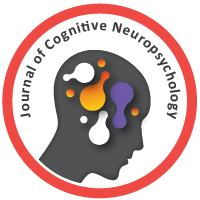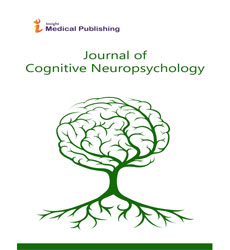Understanding Memory Reconsolidation
Subhrajit Bhattacharya*
Department of Pharmacology, Emory University, USA
- Corresponding Author:
- Subhrajit Bhattacharya
Department of Pharmacology
Emory University, USA
Tel: 317-902-0914
E-mail: sbhat40@emory.edu
Received date: September 25, 2017; Accepted date: September 26, 2017; Published date: October 04, 2017
Citation: Bhattacharya S (2017) Understanding Memory Reconsolidation. J Cogn Neuropsychol. Vol. 1 No. 1:2
“Memory” has been an elusive concept since its inception as a neuropsychological entity. Compared to memory as we understand for electronic and computational devices, which is stored as binary information in chips and circuits, biological memory is encoded as proteins and impulses which form a memory trace. Once an event is registered by the brain after it occurs, a trace is formed that is selectively associated with the event that triggered the formation on the first hand. Initially the trace is unstable, which progressively becomes more and more stable. This process is known as consolidation of memory. To give an example, when one puts a hand into a closet and gets bitten a spider, he or she forms a memory that is associated with the environment which includes the closet, the room in which the closet is, the ambience in which the incident occurred and the fearful experience of getting the bite. This memory is consolidated over time and forms a trace. Now, the next pertinent question is what happens with this memory? Does it become permanent or it is amenable to alterations? Is this memory labile? These questions lead to another interesting concept called memory reconsolidation. To put things into perspective, we go back to the closet and spider story. This time, the person goes back to same closet. May be the spider is not even present there anymore. But he or she expects to be bitten by the spider again and a fearful memory comes back. This is called retrieval of fear. The retrieval of this particular memory is context specific. The context here is the room, the closet and the ambience around it. What actually happened is the initial memory trace became labile and helped produce the fearful memory. Once the consolidated memory is brought back to a labile stage, progressively over a period of 6-7 h [1,2] the memory traces become permanent once again. This process is known as reconsolidation of memory. The example presented here pertains to a fearful event, since fear memories are one of the best studied and critiqued forms of memory in the field of memory reconsolidation. This entire process is complex and beyond comprehension in this article. But small details and important aspects are discussed briefly in the following section.
The process of reconsolidation occurs over a period of six to seven hours, as mentioned earlier. Initially post retrieval, the already consolidated trace becomes labile once again, only to be reconsolidated. Previously it was thought that memory once formed is stable and not prone to any manipulations. But slowly it has come to the fore that during the reconsolidation period, memories can be altered, manipulated and weakened or strengthened [1-4]. These observations have opened new avenues for intervention in fear memory related stress disorders like Post Traumatic Stress Disorder and chronic anxiety [5].
Reconsolidation includes a plethora of systematic, biological and biochemical as well as epigenetic changes at the level of the entire organism to unit receptors [1,2,6-9]. The changes are signature to the process and are specific to individual micro-time windows in the overall six to seven hour period post-retrieval. Recent research has shown that AMPA and NMDA type glutamate receptors are involved heavily in the reconsolidation process [1,2,10]. GluA2 subtype of AMPA receptors show a biphasic wave in hippocampal areas during reconsolidation of fear memories in both mice and rats [1,2]. These changes are associated with altered miniature responses of AMPA receptors that alter according to AMPA receptor surface expression [1]. Furthermore, these changes are associated with AMPA receptor co-localization with Post Synaptic Density (PSD) complex [2]. Other findings show that not only immediate AMPA receptor current but long term plasticity is altered throughout the reconsolidation period. Studies showed both long term potentiation and depression (LTP and LTD) are altered during the course of reconsolidation. Other studies have corroborated that phosphorylation of different receptor subunits and downstream proteins have a temporal pattern that is distinct during the reconsolidation period. Researchers have also found NMDA receptor subtypes to be implicated in memory reconsolidation among many other major excitatory and inhibitory receptor families that is beyond the scope of this editorial. Research has also shown that different areas of the brain like the hippocampus, amygdala and prefrontal cortex are specifically involved in reconsolidation depending on the type and nature of the memory involved.
Behaviorally reconsolidation process has been defined through different tests and procedures at the systemic level. Long term and short term memories have been shown to be formed and prone to alterations during the reconsolidation process [1]. Blockade of receptor waves have been shown to reverse LTP and LTD patterns as well as freezing behavior or spontaneous recovery of fear during post reconsolidation manipulations [2]. Overall, this relatively nascent field is extremely important to understand the nuances of memory formation, processing and storage. Active research in this field is ongoing to further evaluate and elucidate the individual processes that control and determine the course and nature of the memory that has been formed.
References
- Rao-Ruiz P, Rotaru DC, Van Der Loo RJ, Mansvelder HD, Stiedl O, et al. (2011) Retrieval-specific endocytosis of GluA2-AMPARs underlies adaptive reconsolidation of contextual fear. Nat Neurosci 14: 1302-1308.
- Bhattacharya S, Kimble W, Buabeid M, Bhattacharya D, Bloemer J, et al. (2017) Altered AMPA receptor expression plays an important role in inducing bidirectional synaptic plasticity during contextual fear memory reconsolidation. Neurobiol Learn Mem 139: 98-108.
- Nader K, Schafe GE, Le Doux, JE (2000) Fear memories require protein synthesis in the amygdala for reconsolidation after retrieval. Nature 406: 722.
- Nader K, Schafe GE, LeDoux JE (2000) The labile nature of consolidation theory. Nat Rev Neurosci 1: 216.
- Debiec J, LeDoux JE (2006) Noradrenergic signaling in the amygdala contributes to the reconsolidation of fear memory: Treatment implications for PTSD. Ann N Y Acad Sci 1071: 521-524.
- Tronson NC, Taylor JR (2007) Molecular mechanisms of memory reconsolidation. Nat Rev Neurosci 8: 262.
- Gräff J, Joseph NF, Horn ME, Samiei A, Meng J, et al. (2014) Epigenetic priming of memory updating during reconsolidation to attenuate remote fear memories. Cell 156: 261-276.
- Milton AL, Lee JL, Butler VJ, Gardner R, Everitt BJ (2008) Intra-amygdala and systemic antagonism of NMDA receptors prevents the reconsolidation of drug-associated memory and impairs subsequently both novel and previously acquired drug-seeking behaviors. J Neurosci 28: 8230-8237.
- Suzuki A, Josselyn SA, Frankland PW, Masushige S, Silva AJ, et al. (2004) Memory reconsolidation and extinction have distinct temporal and biochemical signatures. J Neurosci 24: 4787-4795.
- Holehonnur R, Phensy AJ, Kim LJ, Milivojevic M, Vuong D, et al. (2016) Increasing the GluN2A/GluN2B ratio in neurons of the mouse basal and lateral amygdala inhibits the modification of an existing fear memory trace. J Neurosci 36: 9490-9504.

Open Access Journals
- Aquaculture & Veterinary Science
- Chemistry & Chemical Sciences
- Clinical Sciences
- Engineering
- General Science
- Genetics & Molecular Biology
- Health Care & Nursing
- Immunology & Microbiology
- Materials Science
- Mathematics & Physics
- Medical Sciences
- Neurology & Psychiatry
- Oncology & Cancer Science
- Pharmaceutical Sciences
